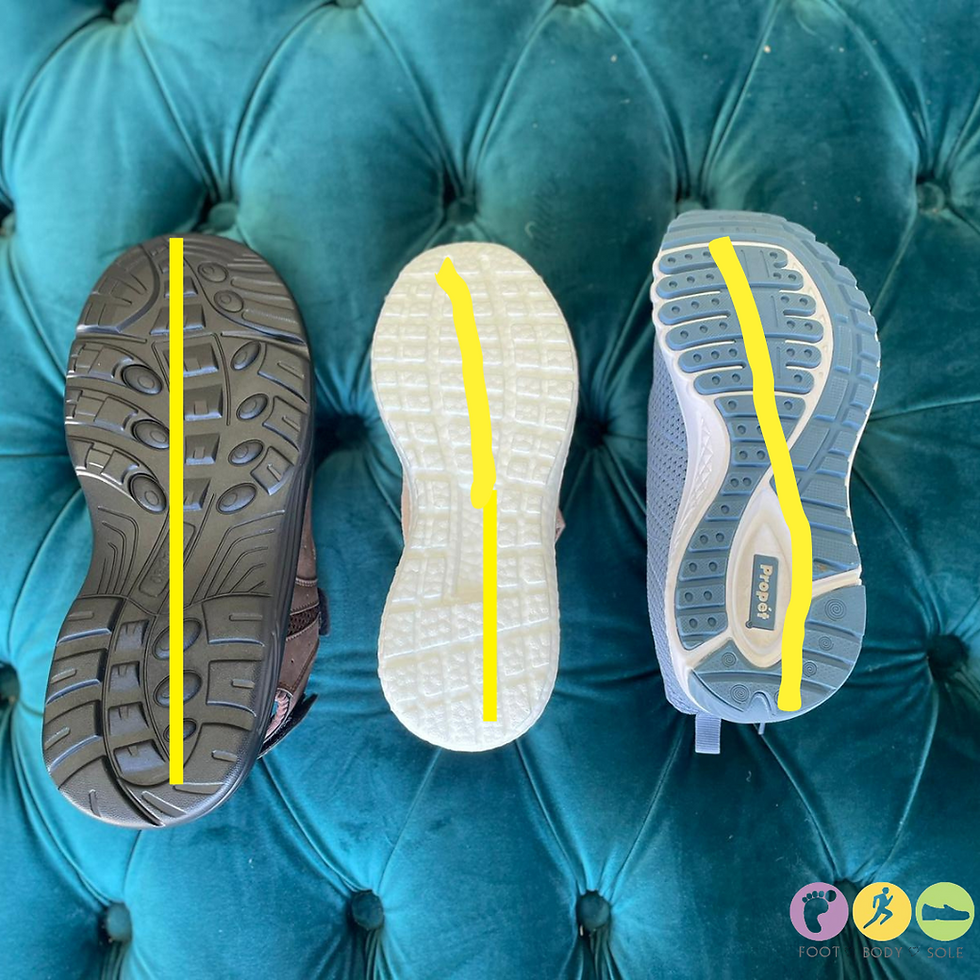Lower Limb Discrepancy (LLD)
- Foot Body Sole
- Aug 8, 2019
- 2 min read
Updated: Aug 11, 2019

Do you find yourself with a constant limp?
Do you find it hard to walk or run?
Do you find yourself with constant lower back pain?
You may be one of many experiencing lower limb discrepancy!
Studies have found that up to 90% of the population experience this condition!
What is LLD?
Lower limb discrepancy ( LLD) is used to express the difference between the lengths of the legs of an individual.
This can often appear in early childhood in which the parents pick up symptoms when the child is learning to walk and crawl or may occur later proceeding an injury or underlying illness.

Symptoms may include:
One shorter leg
Limping or toe walking
Feeling tired after walking
Tilted shoulder
Curved back (Scoliosis)
Pain in the ankle, knee, hip or lower back
Examination
Early detection is usually from the Parents who observe that something is not right with the way their child is walking.
Gait analysis.
Careful examination of your gait would be observed to assess for any signs of limb length discrepancy. This could be indicated by toe walking or flexing the knee during walking.
Measuring the discrepancy.
Measuring two points of the leg, usually from the anterior superior iliac spine (a bony projection of the iliac bone or pelvis) to the middle of the malleoli (a bony projection of the ankle ).
X-rays.
To further clarify an imaging request may be organised to provide a precise measurement of the discrepancy.
Some causes can include:
Prior broken leg injury including breaks and fractures
Conditions causing inflammation during growth
Idiopathic or unknown cases including overgrowth or undergrowth of one structure in the leg compared to the other
Neurologic conditions
Unilateral clubfoot, a deformity in which an infant's foot is turned inward
Cerebral palsy, caused by damage to the brain during or before birth
Spina bifida, range of birth defects that affect the spinal cord
Bone infections in growing children
Neurofibromatosis, tumour growth in the nervous system
Osteoma, benign growth of new bone on top of the existing bone
Ollier disease, a rare nonhereditary condition of cartilage growth that develops within the bones
Treatment varies depending on the patient's age, the size of the measurable difference and the cause of the discrepancy.
Conservative management
Regular monitoring if the patient is a young child who has not reached skeletal maturity
Targeted stretching the muscles of the lower extremity
Heel lifts.
Heel lifts are the most common treatment tool and can be used for patient with a discrepancy of up to 20mm.
These small inserts are used at the heel used to build up the length of the shorter leg. The thickness of the heel lift is dependent on the discrepancy. They are inexpensive and easily applied.
If the discrepancy is greater than 20mm, we can look at some modifications to the footwear and build up the sole of the shoe on the shorter leg to even the length up.
Surgical management is only considered if the above options aren’t working.
The methods used are:
Stopping bone growth in the longer leg
Shortening of the long bone
Lengthening of the shorter bone
Podiatrists are trained to assess for leg length discrepancies and treat them! To find out more or to check if you are suffering from LLD come in and see us here at Foot Body Sole!
To make a booking please call 1800 778 316 or click below.









Comments